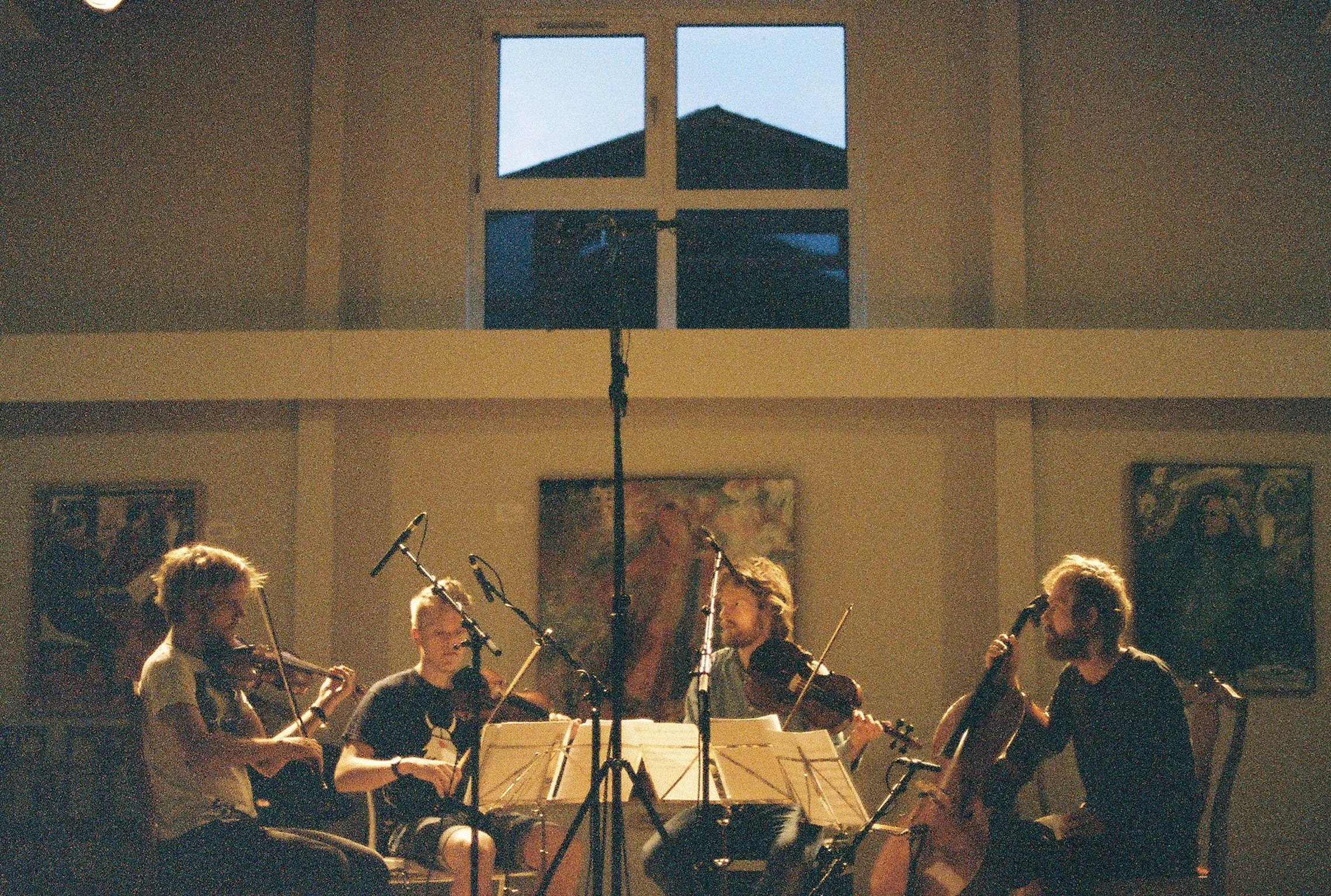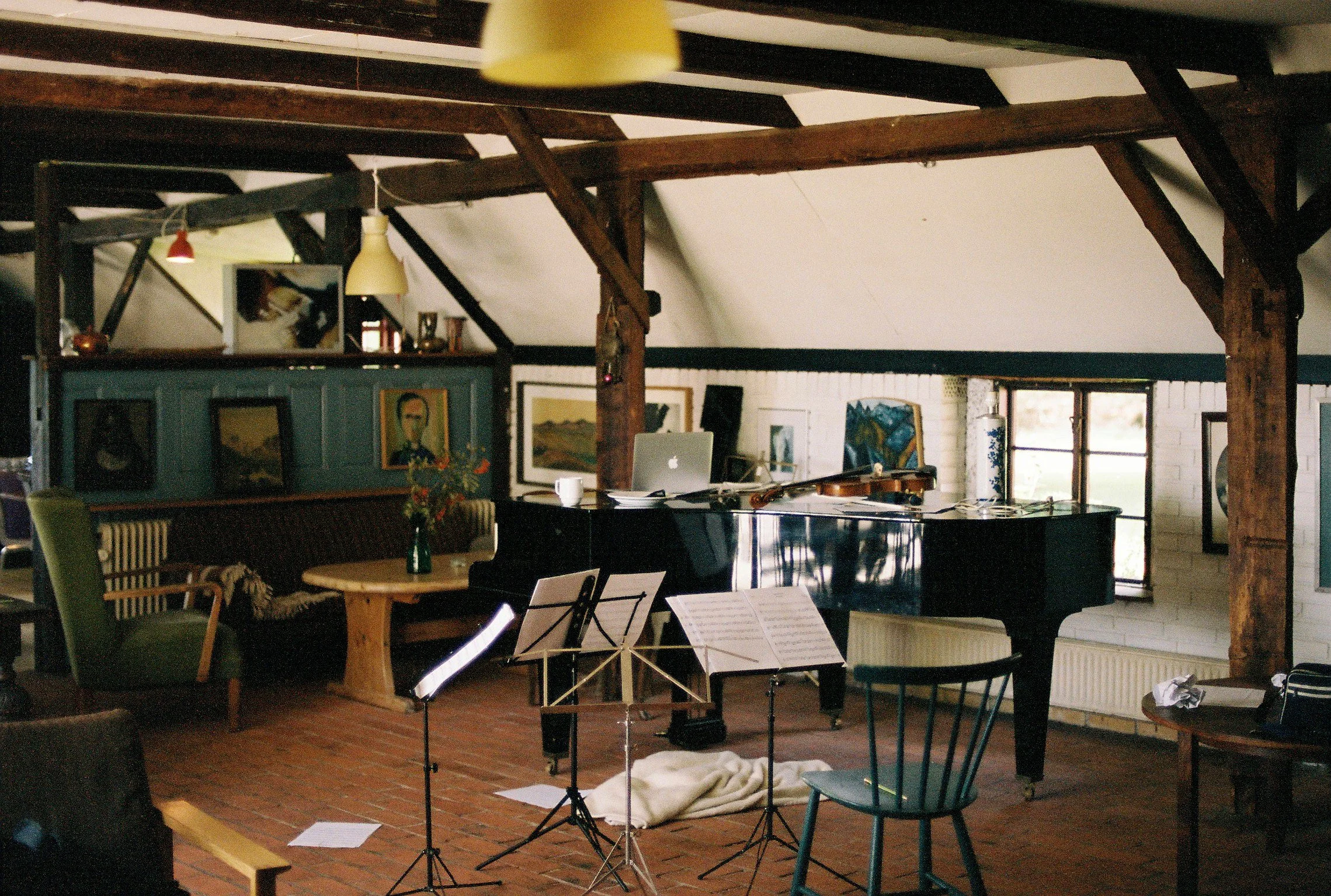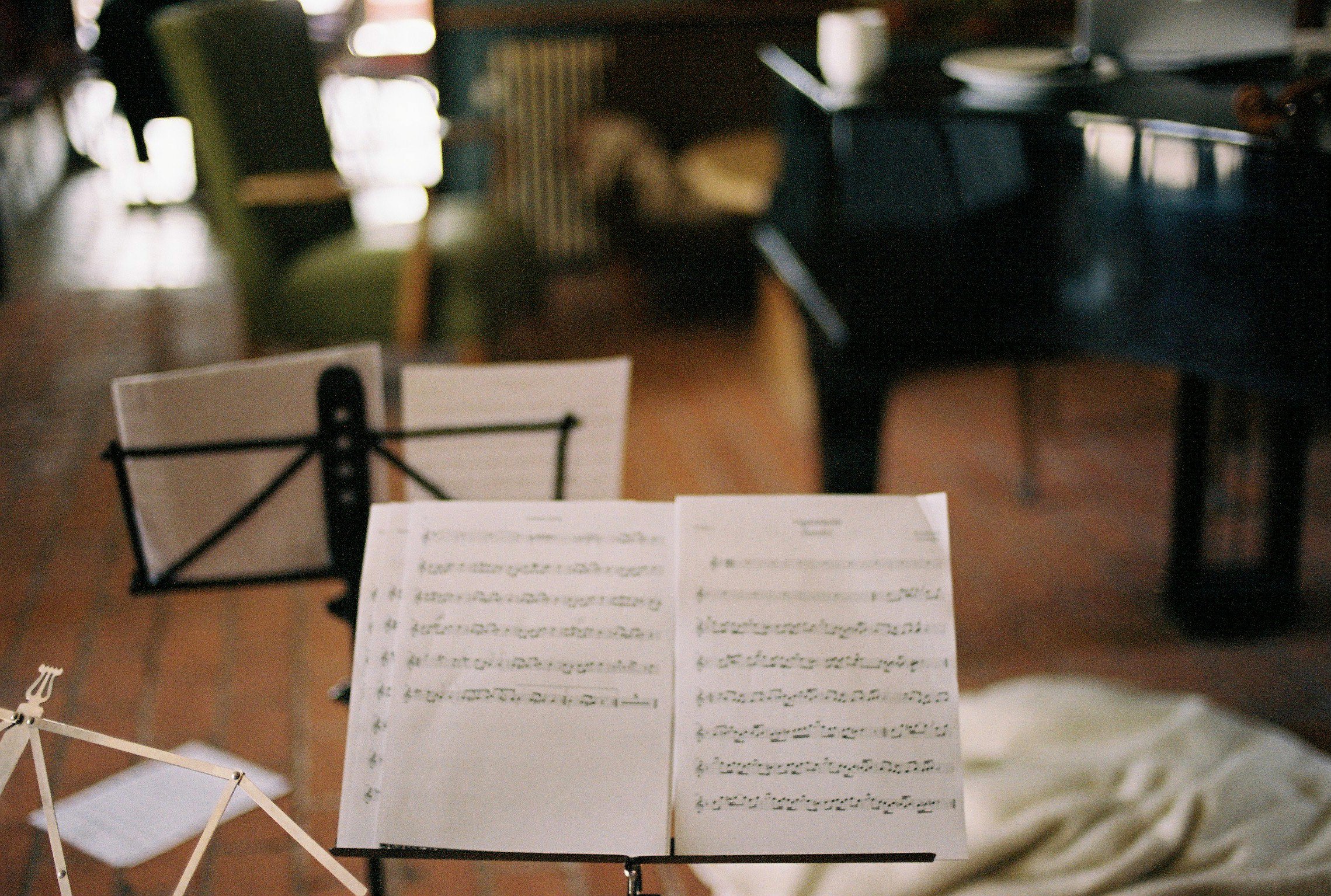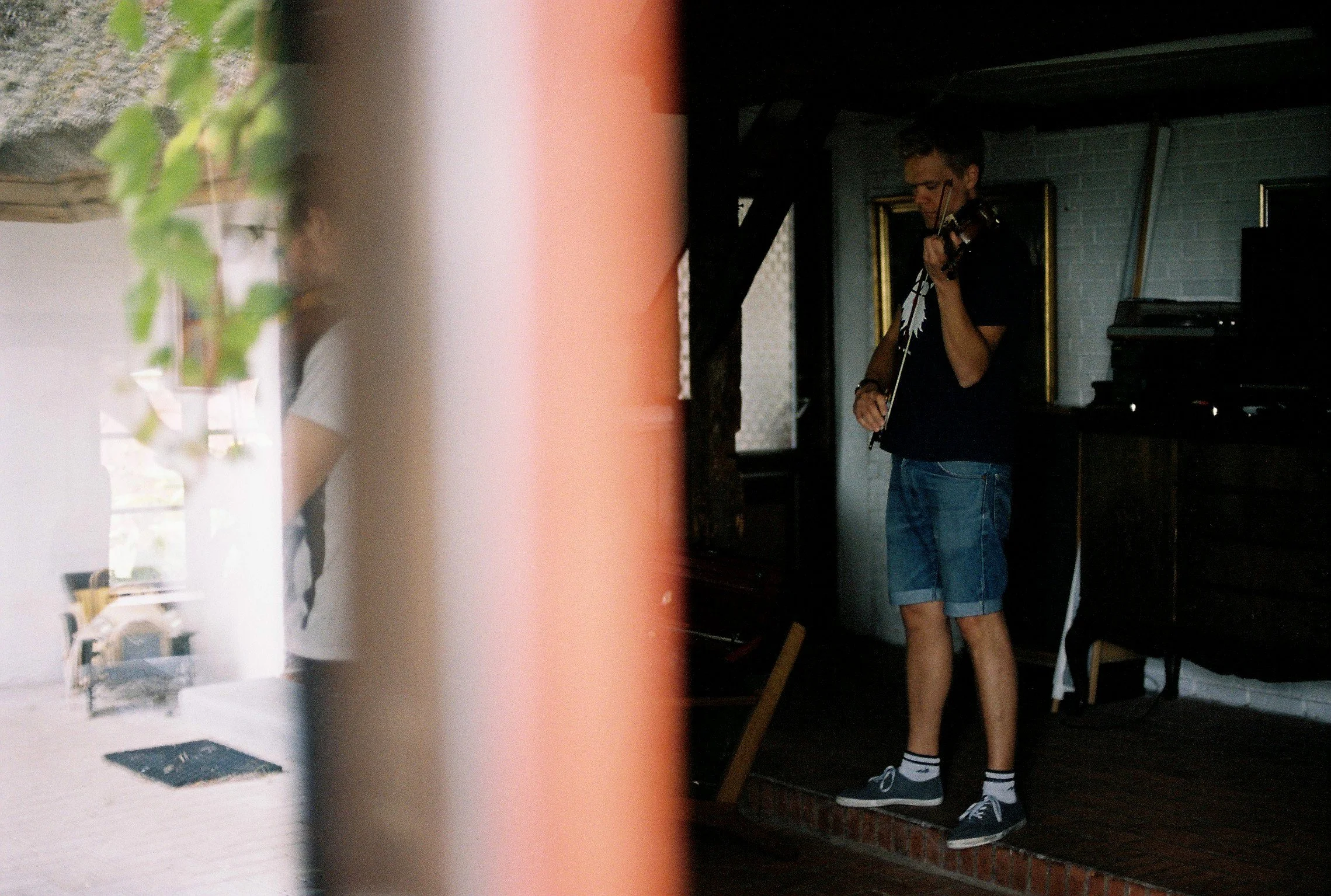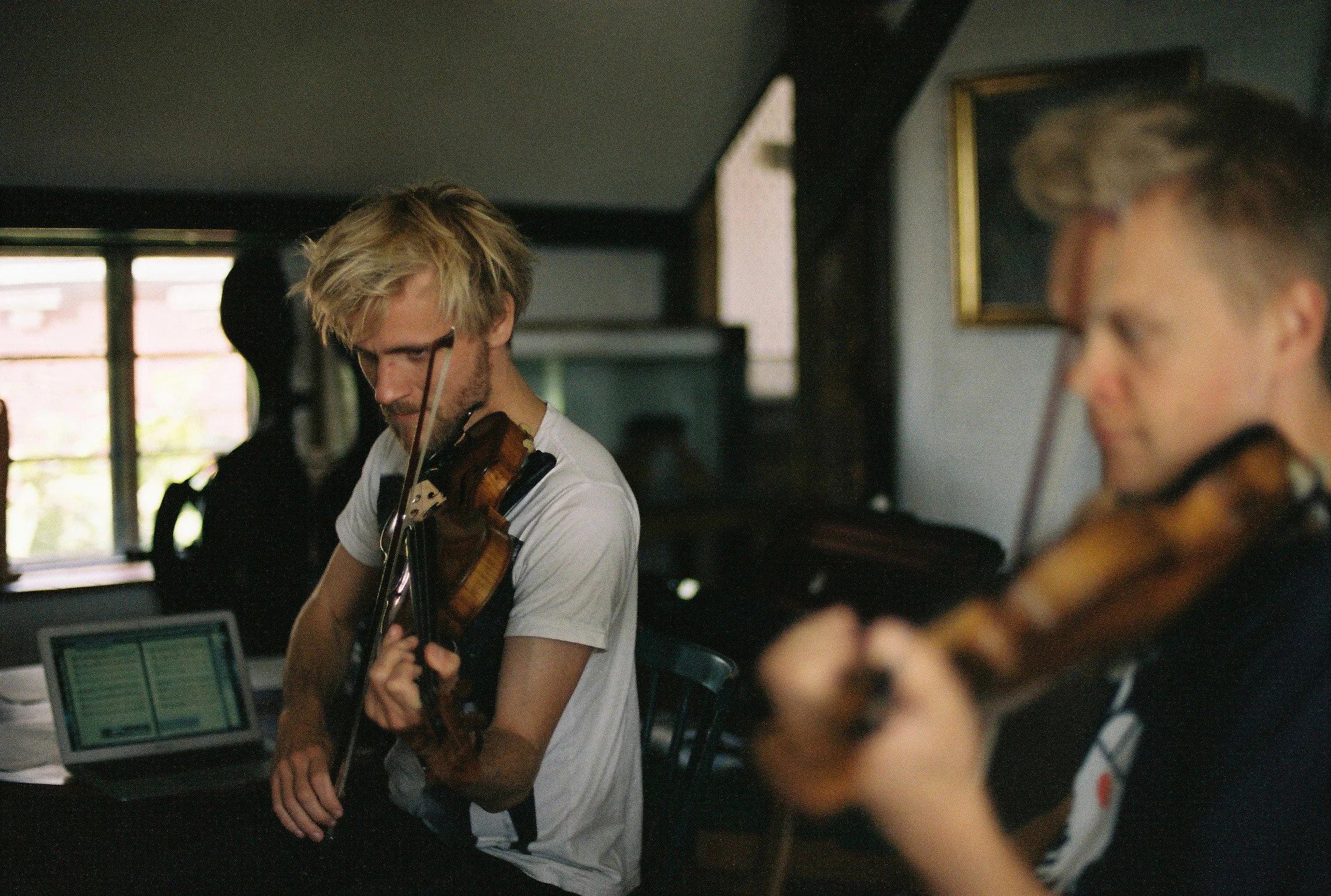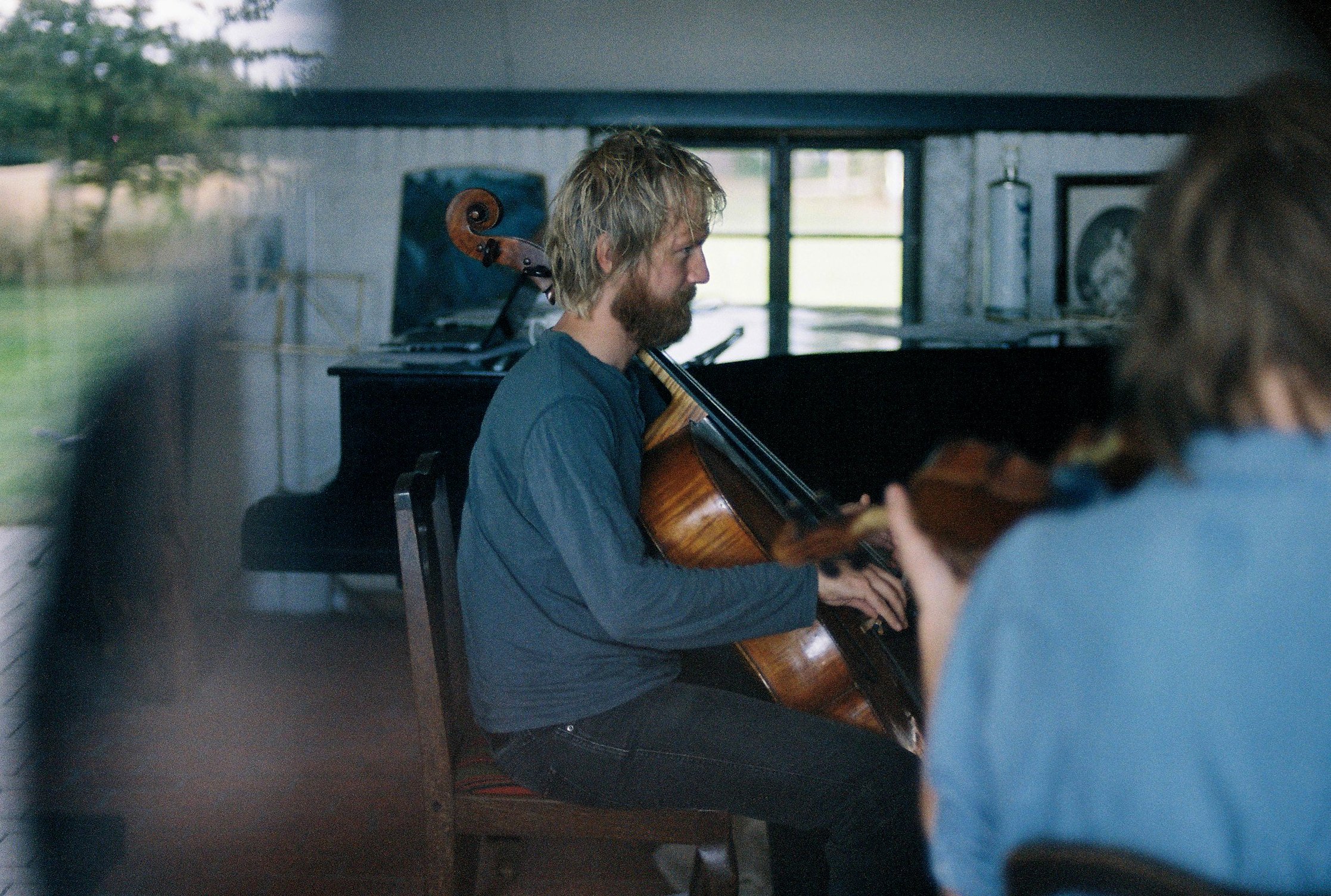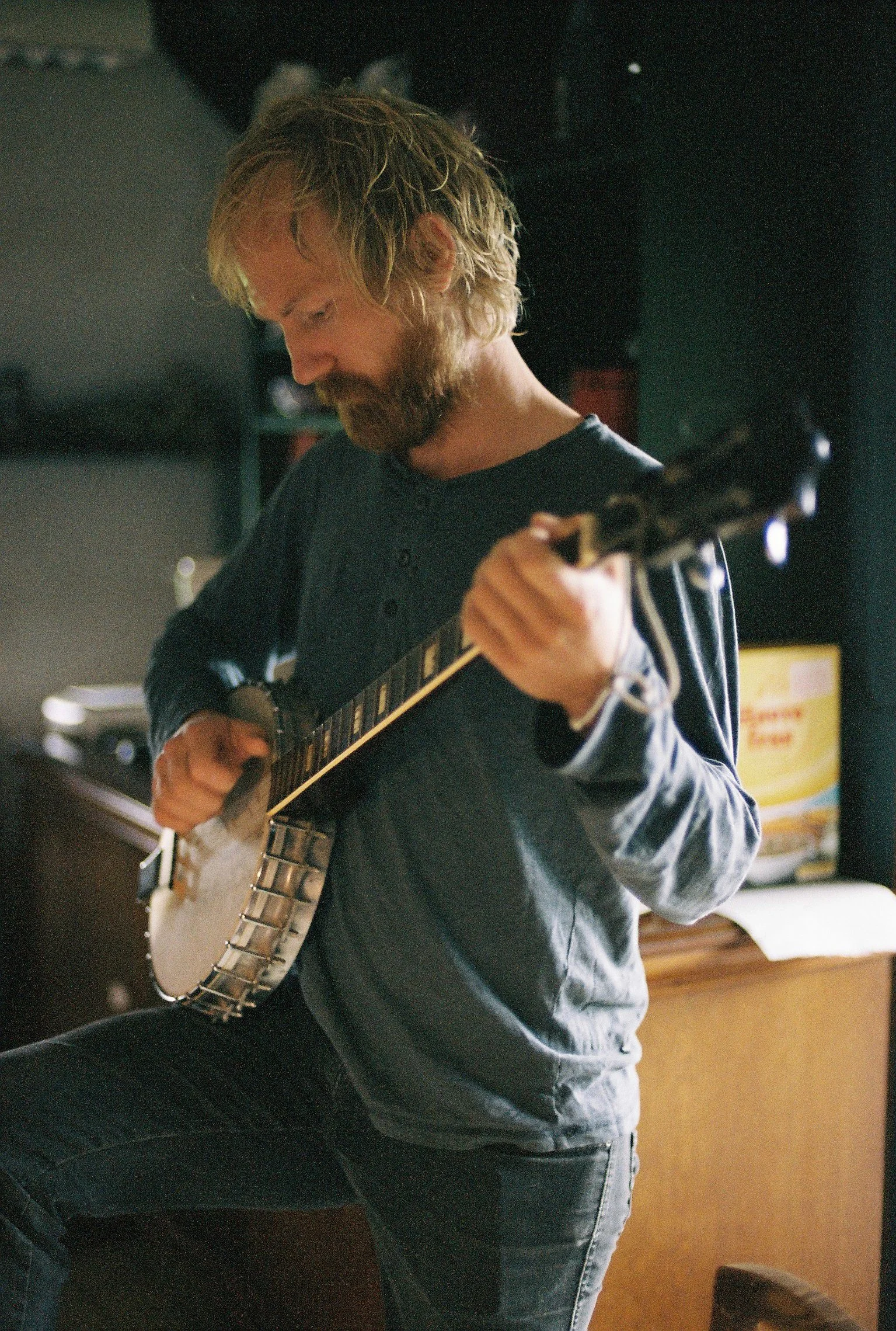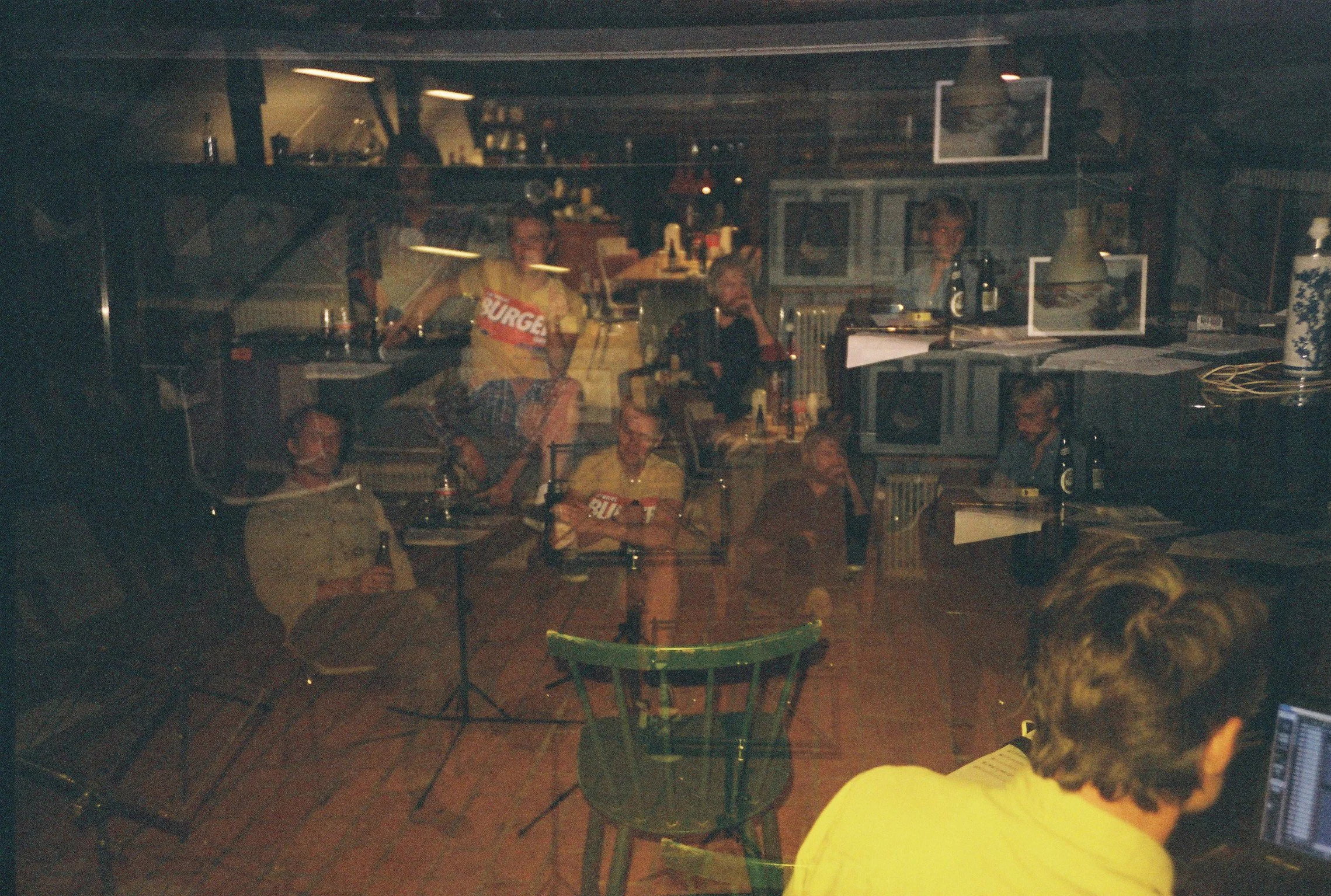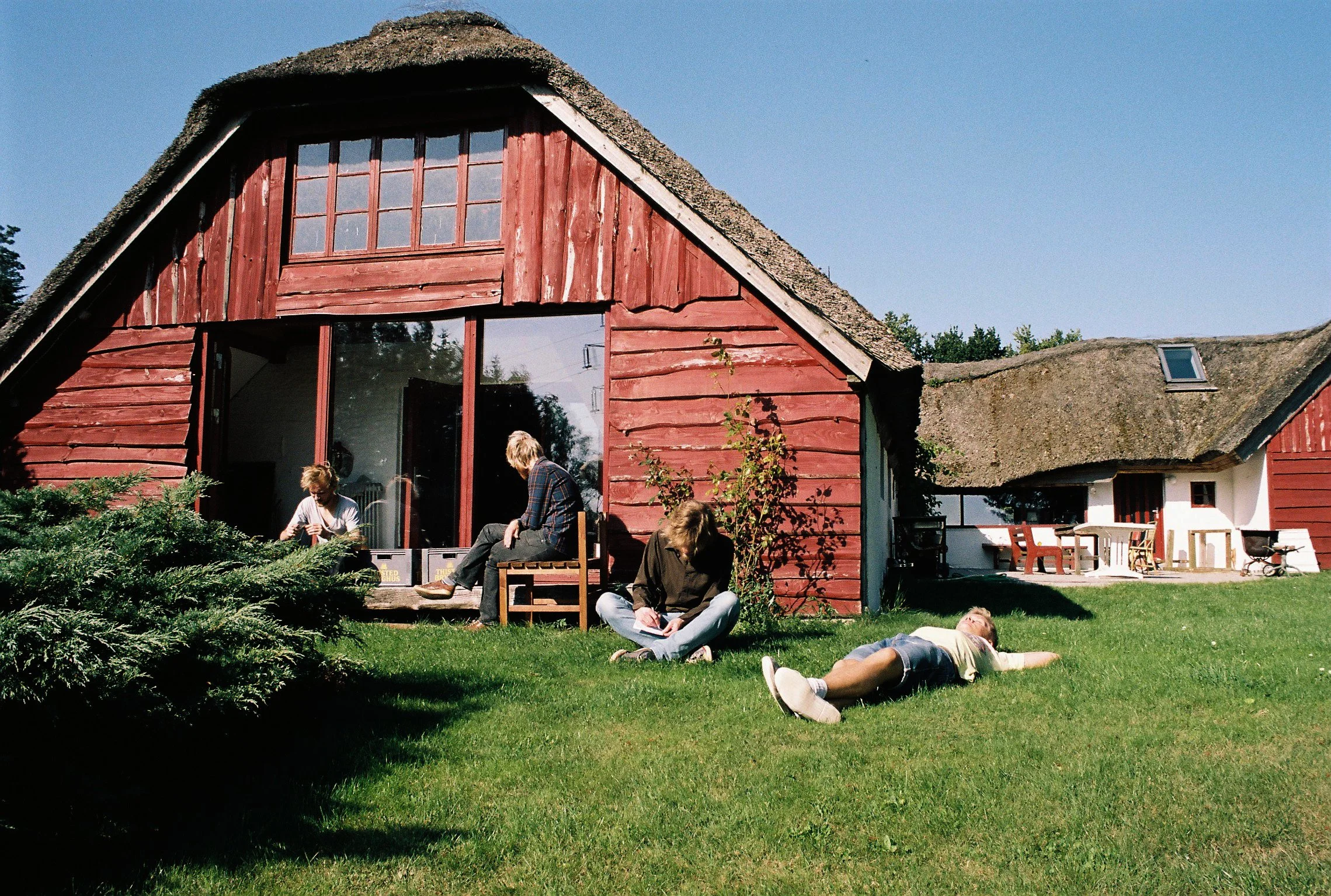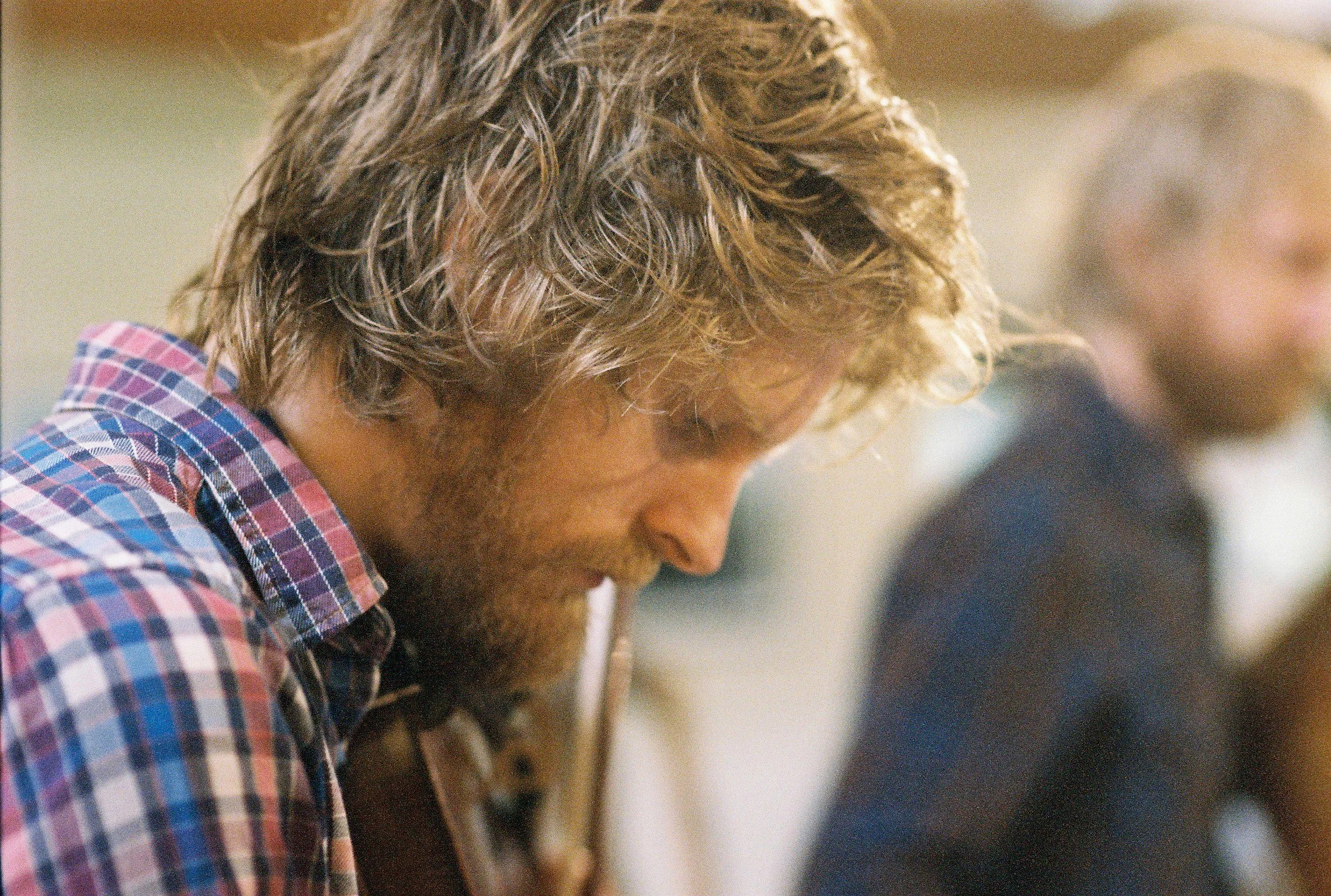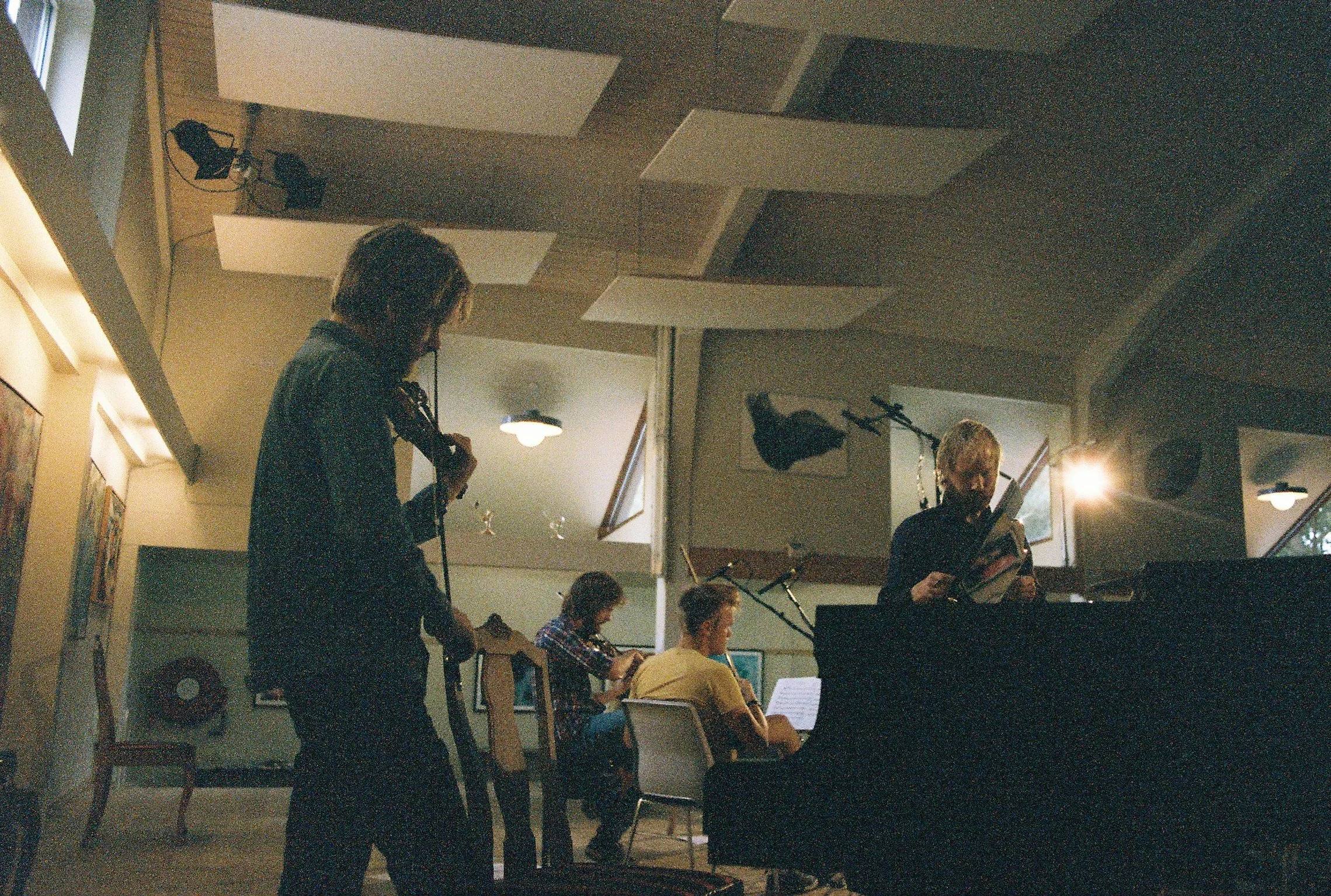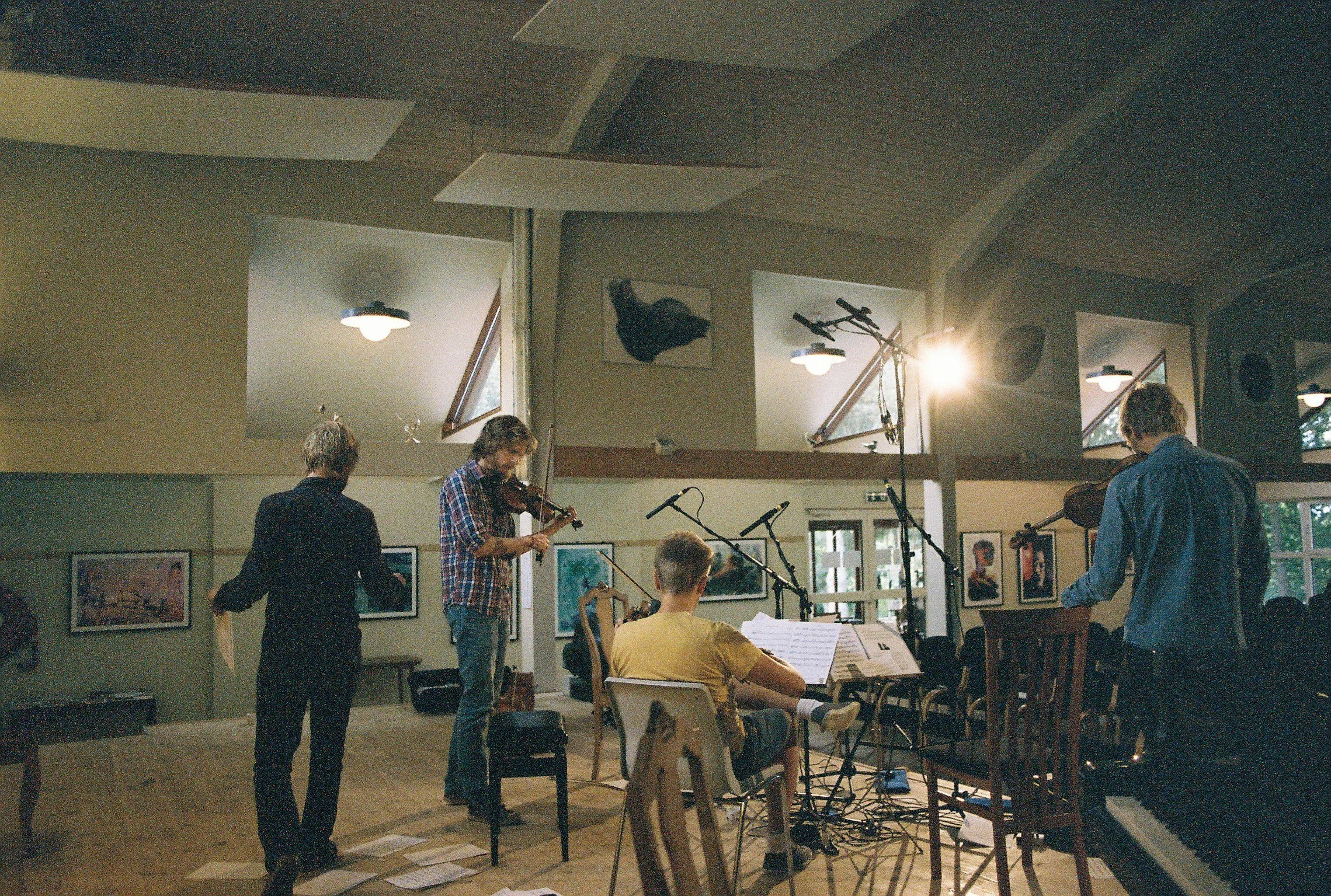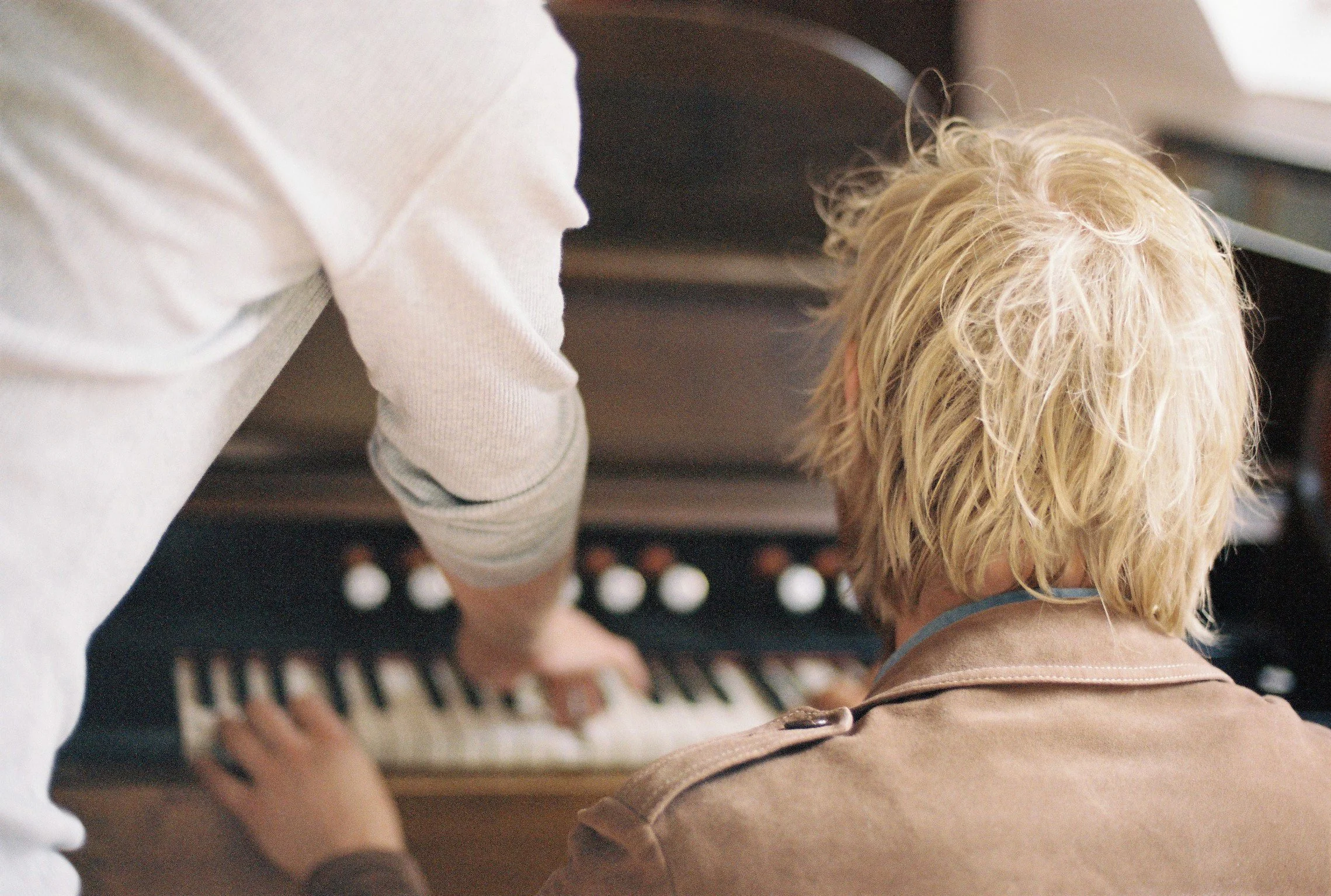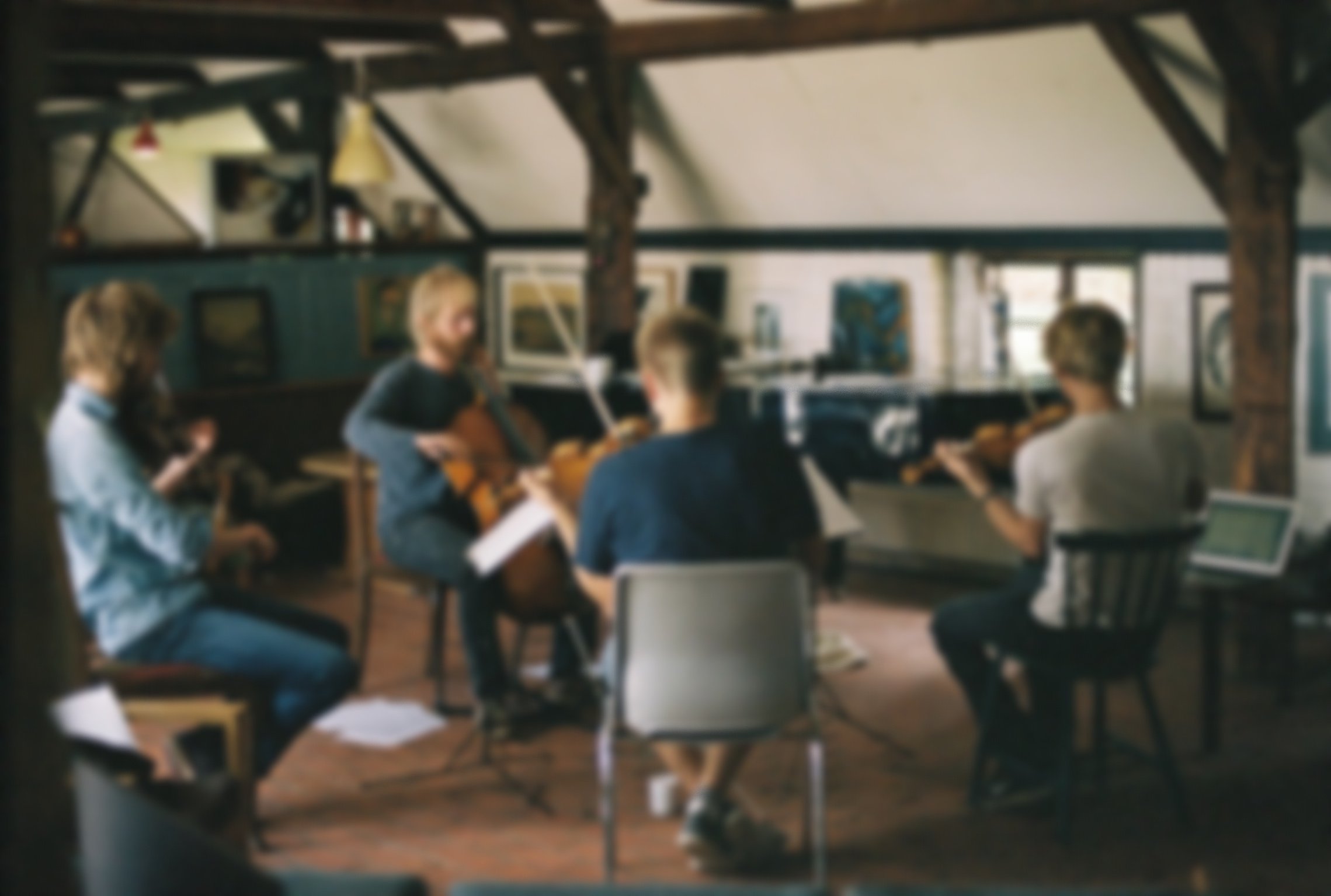
TUNES & TRADS
10 years of exploring the musical roots of Scandinavia through the string quartet
2014-2024
Being part of the Danish String Quartet feels like a musical adventure. We're four friends who've always had a soft spot for all types of music. Two of us have deep roots in northern traditional music, which we eagerly explored in our early days. As we came together to form the quartet, these folk melodies naturally blended into our rehearsals. We were experimenting with lots of different tunes, each of us adding a personal touch. This evolved into a serious endeavor over time. Our skills sharpened, our arrangements grew in depth, and by 2014, we felt ready to go to the recording studio. That's when 'Wood Works' was born, a milestone that deeply intertwined folk music with our artistic journey. From that day forward, these tunes has not just been a part of our repertoire, but an important element of our identity as musicians.
The journey didn't stop there. In 2017, we released 'Last Leaf', another album with tunes from the North. We also made all the arrangements public, and it's been incredible to see how many of you have given these tunes new life, playing them all around the world. Your interpretations have added new dimensions to our music, and for that, we are immensely grateful. Take a look at the map below to explore some of these amazing renditions.
To celebrate a decade of this musical journey, this year will see the release of our third album on ECM accompanied by new sheet music material. Alongside this, we are excited to announce several concerts across Europe and North America with both old and new material. We hope to see you there!
THE PODCAST
Join us as we sit down with Danish journalist Jakob Wivel to reflect on a decade of folk music—exploring its impact, its evolution, and what it has meant to us and the wider community.
THE MAP
Explore some of the various renditions you all have contributed! Keep them coming! Click on the markers for additional information and links to the videos.
Please send any new video recordings to danishquartet@gmail.com, and we'll make sure to include them on the map!
Tunes & Trads - related events 2024
-
NEW ALBUM
Summer 2024
On August 30th we will release our third folk music album, Keel Road, on ECM Records. Brace for fresh new arrangements and compositions as we set on a more Western course, featuring melodies from Ireland and England in addition to the music from home.
All the material will be available as sheet music too! Visit our webshop by clicking the link below.
-
FOLKETS FESTIVAL
May 4th
We are happy to join Dreamers' Circus’ and VEGA's one-day festival in Copenhagen, Folkets Festival! Catch us performing a full set of tunes from "Wood Works," "Last Leaf," and sneak peeks from our upcoming album. Join the musical celebration!
-
STRINGS FESTIVAL, Colorado
July 28-29
In late July, we're teaming up with the Strings Festival to craft a two-day mini-festival in the heart of Steamboat Springs, CO. Beyond the concerts, immerse yourself in workshops, talks, a lively Nordic dance ball, and a good old Nordic jam session. It's a celebration of music, and the joyous spirit of the Nordic traditions. Save the dates!
Seafaring Spirit
The Danish String Quartet’s latest expedition into traditional music blends old and new
By Thomas May for the Strings Magazine
Though seemingly ever-youthful, the Danish String Quartet (DSQ) made its debut more than two decades ago, and the three actual Danes in the ensemble—
violinists Rune Tonsgaard Sørensen and Frederik Øland and violist Asbjørn Nørgaard—have been playing together since childhood (Norwegian cellist Fredrik Schøyen Sjölin joined in 2008). That longev- ity, rooted in their earliest musical endeavors, undoubtedly provides a foundation for the DSQ’s acclaimed unanimity of purpose and expression.
But another source of their characteristic sound and hive-mind-like rapport in playing off one another can be found in a shared love of traditional Scandinavian music. The ensemble’s new release, Keel Road (ECM New Series), brings the same high standards—and sense of enjoyment—to this facet of their identity that they reliably apply to the loft- iest masterpieces of their repertoire and the con- temporary composers they champion.
“We’ve become more aware of the impact this music has and what we can do with it,” says Sørensen. The DSQ’s own website includes a page (“Tunes & Trads”) describing the significance that exploring traditional music from Scandinavia and Northern Europe plays in their outlook. Keel Road is the third release devoted specifically to their engagement with folk music sources.
The first, Wood Works, appeared in 2014 on the Danish Dacapo label and delighted international fans with bittersweet snapshots of village life of old and its dances, wedding celebrations, and bal- lads. “We went to the beautiful Kirsten Kjær Museum in Northen Jutland in a very remote for- est location, with nature all around, to record it,” recalls Sørensen. This was followed by Last Leaf in 2017 from ECM’s New Series, which took its name from the oldest known secular tune from Denmark preserved via the “last leaf” of the Codex Runicus from about 1300.
“Wood Works was more of a collection of things we’d been playing, with no bigger thoughts behind it,” according to Sørensen. “We had no idea what it was going to be or how the reception would turn out. But we’ve become more ambitious in the way we are curating and arranging the music.” He deems Keel Road, which also includes more mate- rial created “from scratch” by the DSQ, as their boldest effort in this area to date. “We try con- stantly to develop and challenge ourselves and not just copy what we did on a previous album.”
lk Roots
The DSQ’s recordings of northern traditional music now encompass a decade of their history. But their fascination with this material goes back to the ensemble’s origins—and even before. Sørensen’s parents met through their involvement in folk dance circles. His father, who hails from the Faroe Islands in the North Atlantic, moved to Denmark in his early 20s and started a course in the national Faroese chain dance that has been passed down from the Middle Ages. “So I grew up with this type of music,” says the violinist.
It was Sørensen, in fact, who first encour- aged his fellow musicians to try out arrang- ing folk music for string quartet. “We started including some simple arrange- ments in our performances in our early years,” he says. “Our first attempt was in 2004, when we entered a competition in Copenhagen and played a traditional Swed- ish folk song. It just grew from there as we started incorporating some new arrange- ments as encores in our classical concerts. So, all of a sudden, we had a catalog of arrangements, and somebody encouraged us to make our first recording of them.”
The initial impetus to follow this direction was reinforced when Sjölin joined the ensem- ble 16 years ago. Like Sørensen, the cellist had developed an attraction to folk music during his childhood in Norway thanks to his father’s impressive record collection of British and Irish folk bands. On Keel Road, both musicians contribute new compositions of their own that convincingly breathe the air of the tradi- tional music that surrounds them.
Where All the Stories Unfold
The album’s title was inspired by a phrase in Seamus Heaney’s remarkable sonnet “The Shipping Forecast”: “Sirens of the tundra/Of eel-road, seal-road, keel-road, whale-road . . .” Keel Road’s musical journey retraces the cul- tural exchange of peoples linked by the North Sea, from the Danish coast via Norwegian fjords to the British Isles, Ireland, and the Faroe Islands.
“For centuries, the North Sea was the main communication channel of Northern Europe, the highway and the internet of bygone eras,” observes the DSQ in the album’s liner notes. “And even though the North Sea is known for its swift upsurges and strong gales, brave sail- ors would again and again travel the keel road, enabling a continuous exchange of goods, culture, and music.”
Sørensen adds: “When we play our Scan- dinavian music, audiences will come up and tell us how much it sounds like Irish music. Indeed, there are tons of similari- ties, and there are many good reasons for that—including this geographical aspect and the sea. We have this image that some- where in the North Sea is a spot where all these stories unfold. Folk music doesn’t really have borders.”
An example he cites is the later 19th- century taste for English dances among Danish people. “Everyone was dancing them, so we have quite a lot of tunes that accompany this type of dance.” Sørensen points to the traditional Danish tune “Marie Louise” as something “very similar to what you would find in England.” This tune, originating from Lolland (an island of Denmark), was discovered in a collection compiled in the later 18th century by the Danish brothers Christian Frederik and Povel Danchel Bast.
Because of its “intense groove,” the album seamlessly extends “Marie Louise” into a longer set that continues with “The Chat,” a new jig that originated during a backstage jamming session between Sørensen and Sjö- lin during an engagement in Chattanooga, and Sørensen’s own whirlwind of a reel titled “Gale Warning” (another reference to the Seamus Heaney sonnet). “We wanted to hint at the Irish tradition of having jigs followed by a reel with this transition. It goes from triple meter to duple meter to give a final boost of energy.”
Multilayered Resonance
Another track that illuminates the link between traditional material and the DSQ’s ability to tap into and reanimate its spirit is Sørensen’s composition “Once a Shoemaker.” It is prefaced by a brief snippet from an old cylinder recording made in 1907 by the Dan- ish folklorist and folk music collector Evald Tang Kristensen (1843–1929).
“He was the Danish Kodály and recorded people singing their songs and telling their stories,” Sørensen says. In the scratchy sam- ple included on Keel Road, “his own wife sings an old ballad about a shoemaker who goes to the Middle East to confess his sins.” This then segues into Sørensen’s wistful con- tribution, the only other track with a vocal component, as the musicians add a layer of wordless humming.
Sjölin has composed a track (“Kjøhalling”) based on the rhythmic propulsion of the tra- ditional rural Norwegian halling, a particu- larly athletic dance in which the dancer circles around a hat held high on a stick and tries to kick it down. (The main theme of the finale of Grieg’s Piano Concerto is famously contoured after the pattern of this dance type.) But “Kjøhalling” is also a play on words that refers to “keelhauling,” a method of punishment once used by navies—as depicted in Mutiny on the Bounty—whereby the unfortunate sailor would be dragged under the ship’s barnacle-covered keel. Now- adays the word means “to rebuke severely.”
Keel Road, which was recorded at the Village Recording Studio in Copenhagen, is replete with treatments that find such multilayered resonance in the traditional material as well. The DSQ’s imaginative arrangements underscore the respectful care they bring to these preexisting sources. Their attitude allows for no “crossover” loos- ening of their meticulous attention to detail, as the album’s opening selection already announces: “Mabel Kelly” by the legendary blind Celtic harpist/singer Turlough O’Carolan (1670–1738), who is also repre- sented on two more tracks (“Captain O’Kane” and “Planxty Kelly”).
“We put our own harmonies on his fan- tastic melodies and sometimes change the structure by adding little intros and outros,” says Sørensen. “But the core of what is basi- cally Baroque folk music in this case remains the same.”
Along with this blending of old and new is an expansion of the classical string quartet palette with instrumental sonori- ties to evoke folk tradition. On Last Leaf, the DSQ began experimenting in this direction, which Keel Road continues to explore. Sørensen even invited Dreamers’ Circus, a folk trio comprising himself on fiddle, Nikolaj Busk on piano, and Ale Carr on cittern, to contribute a track (“Stormpolskan” by Carr).
An especially poignant instance of the raw physicality—the “wood works”—of folkish sonority is the presence of the clog fiddle (träskofiol) on “Once a Shoemaker.” Sørensen describes the humble origin of this instrument—a wooden shoe repur- posed into a violin—as an alternative to unaffordable fine instruments from Italy or France, which peasants would produce “from whatever they had available, shoes or cigar boxes.” Along with an actual clog fiddle, the other musicians use wooden mutes in the song’s final chorale to evoke its nasal sound.
Some of the other sound effects on Keel Road draw from “all the different types of albums we’ve listened to through the years,” Sørensen adds, mentioning the music of Sufjan Stevens as an inspiration for the “atmospheric outro” that colors “Shoe- maker” with a kind of musical sepia tone, a neat parallel to the archaic sound of the cyl- inder sample introducing it.
Making Arrangements
Nowadays, the internet offers an efficient alternative to time-consuming collection missions “in the field” to find suitable mate- rial. Still, says Sørensen, “it’s important to go out and feel the music in the place where it originates. We’ve been going to Fanø, for instance, for many years and know of around 100 traditional tunes from this island. Going to the community house in a little village, experiencing the atmosphere and how the music plays on for hours and hours is amazing.”
How does the division of labor work when it comes to arranging traditional sources? “Normally, one of us—usually Fredrik or myself—finds a tune that we love and that represents a certain mood or character that resonates with us. Then we bring a more-or-less finished arrangement to the group and fine-tune it together.”
Improvisation, which is so central to folk music, enters the picture once that basic format has been determined. During perfor- mances, it often involves ornamentation or free sections of a piece in which, as in jazz, “someone plays a solo which is completely improvised.”
The DSQ’s excursions into folk and tradi- tion have become increasingly integrated into their formal concert life. Sørensen sees its influence on the ensemble’s interpreta- tion of classical repertoire as subtle and hard to define beyond a fresh awareness of the centrality of “pulse and groove, which drives the dance movements in Mozart, Haydn, and Schubert.” Regarding the reverse direction—classical influences on their arrangements of folk music—the inspiration is “probably on a subconscious level. We’ve played the repertoire for 20 to 25 years by now, so we know what voicings sound great for a string quartet.”
But whether the music is classical or folk in origin, their way of working remains the same. “We bring the same respect in terms of the colors, character, narrative, all the little details, because we consider all of it as serious music. One thing we’ve discov- ered from this work is that it’s important to play music that resonates with you if you want to sustain a long chamber music career.”
The DSQ’s practice of making sheet music of their arrangements readily avail- able is a further expression of their sense of connection to this material. “It’s per- haps a bit of a contradiction, because tra- ditionally this has always been shared orally,” Sørensen says. “But that’s hard when you have a string quartet arrange- ment like ours, which lands somewhere between classical and folk music. It’s our way to give people an opportunity to get to know Scandinavian music through a string quartet. Sharing, handing on music: I think that’s what folk music is about in its essence.”
Stats
What you listened most to on Spotify.
Number of streams
Some shots from the amazing Kirsten Kjærs Museum. Located in the forests of Northen Jutland this is where both Wood Works and Last Leaf was recorded. These photos by Caroline Bittencourt is from the Wood Works session in 2013.
